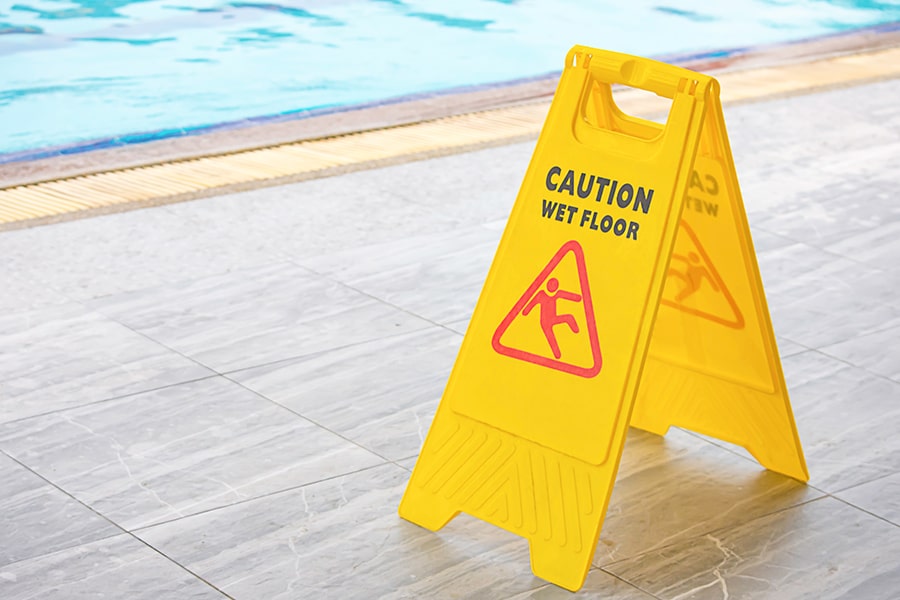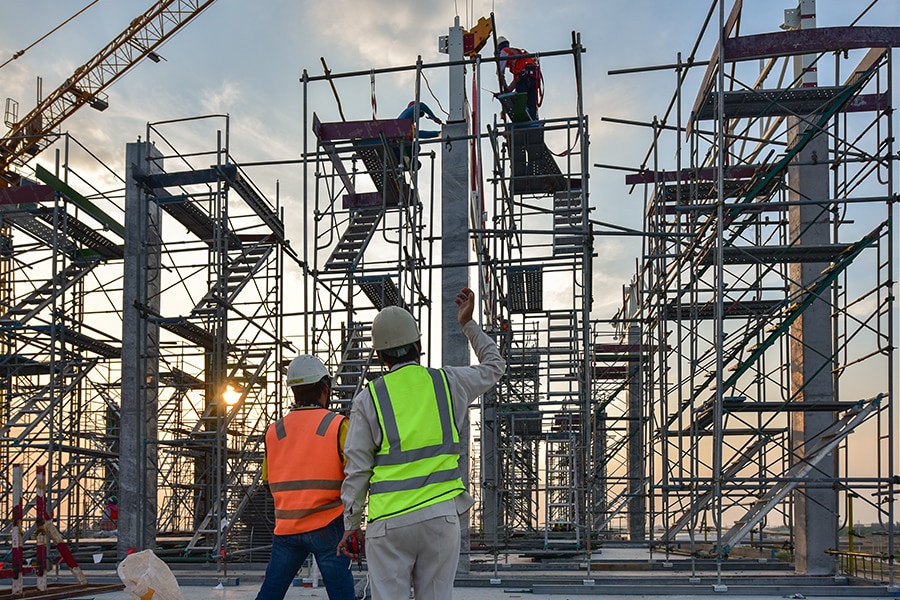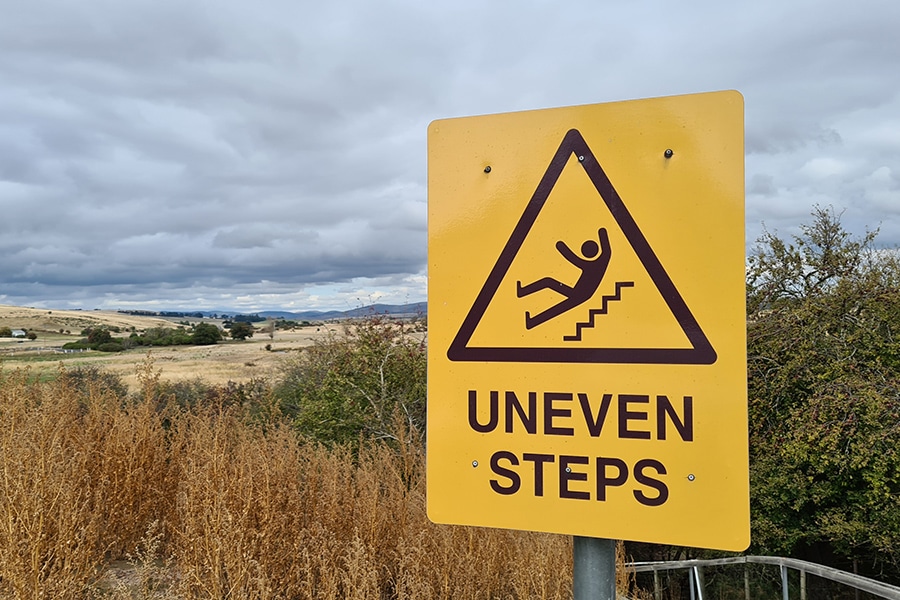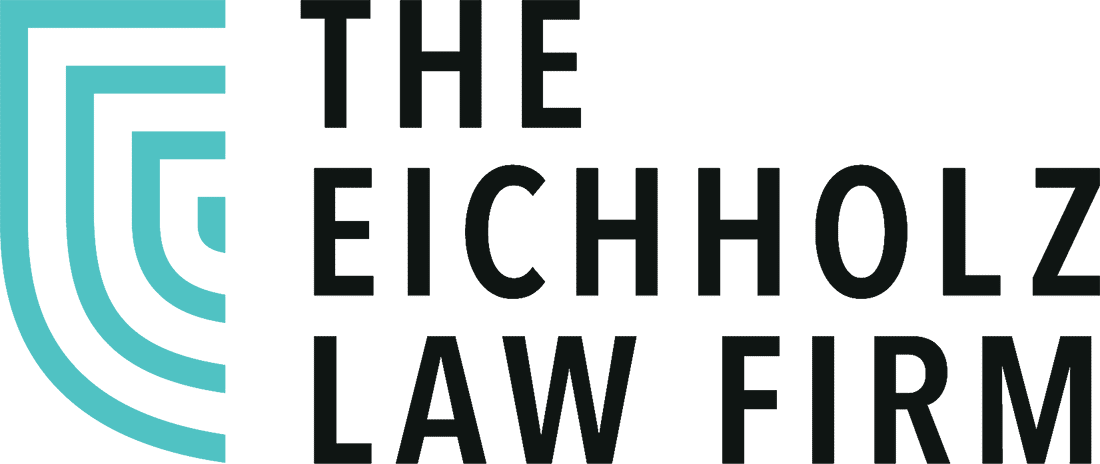Slip & Fall Attorneys
In Savannah and throughout Georgia, people are often injured as a result of slip and fall accidents. These injuries can happen on an individual’s personal property or a business’ commercial property, as well as various types of public and recreational areas.
By definition, a slip and fall accident is used to describe when someone slips, trips or falls and is injured as a result. Quite often, these types of injuries occur on another person’s property or in the workplace, in which case a premises liability claim may be filed against the property owner.
For most people, this type of accident probably seems fairly self-explanatory. However, there are aspects to these accidents that may be overlooked or somewhat unclear. The information contained here will help explain the legal aspect of slip and fall accidents.
Get Your Case Evaluation:

Common Causes of a Slip and Fall Accidents
It’s important to note that while there can be many contributing factors to a slip and fall injury, it can be very difficult to prove the validity of your claim due to the large number of fraudulent claims that have been made over recent years. When this factor is combined with the large amount of surveillance equipment that many businesses use on, in and around their premises, your claim needs to be very accurate and robust in order to withstand the litigation process. With this in mind, over time there are a number of genuine situations that have consistently proven to increase the chances of a slip, trip or fall accident occurring. It would be impossible to make an exhaustive list of all the circumstances that can lead up to an individual slipping and falling on another person’s property. Below is a very small list of just a few causes:
- Some of these can include (but are not limited to):
- Failure to guard against dangerous adjacent areas
- Negligent care of a sidewalk or publicly owned area, such as a pothole in the ground
- Safety code violations
- Torn carpeting
- Changes in flooring
- Poor lighting
- Wet floors
- Unsafe or narrow stairways
- Lack of a hand or grab rail
- Faulty escalator stairs
- Elevator malfunction (quick stop or start)
- Untextured concrete
Types of Slip, Trip or Fall Injuries
Surprisingly, over one million people each year end up in emergency rooms across the country for this very reason. When broken down, the figure equates to 2,000 people every day. Of the total number of all 8 million emergency room visits per year for every reason, slip and fall accidents account for about 12 percent.
As with any serious accident, the victims involved in a slip, trip or fall can often suffer multiple injuries.Due to the unexpected nature of this type of accident, a slip and fall injury can also range from minor strains or sprains to much more serious, life-altering damages.It’s important to add that these injuries can be magnified depending on what surface the victim falls onto – concrete for example, is much less forgiving than a thick, well manicured lawn.With this in mind, some of the most common injuries can include (but are not limited to):
- Fractures and broken bones
- Spinal cord damage
- Deep tissue bruising
- Facial damage
- Traumatic brain injury
- Chipped/broken teeth
- Neck strain
- Pinched nerves
- Concussion

Who is Likely to Slip and Fall?
People of all ages are at risk of suffering an injury from a fall. Older adults age 65 and over, however, seem to face a higher risk of danger from falling, per the Centers for Disease Control and Prevention (CDC). It appears on average that one out of every four senior citizens falls each year. Once a senior has fallen, the chances of falling again double. The CDC notes that non-fatal fall injuries cost around $50 billion annually.
The World Health Organization (WHO) has its own statistics, as well, concerning this topic. The WHO states that falling is the second most common cause of unintentional and accidental injury deaths each year worldwide. Traffic accidents are the number one cause. Children have a high risk of catastrophic falls because they tend to take high risks through potentially dangerous actions.
Individuals such as construction workers who are working in hazardous, high-height professions stand a great possibility of being injured in a fall. Others who use alcohol, illicit drugs, and pain medications are also at a greater risk of injury through falling.
Know What to Do After a Fall
When someone experiences a fall and subsequent injury from a property owner’s negligence, the victim needs to take certain steps to protect the right to recover damages. Begin by writing down pertinent details such as:
- The date, time and weather conditions
- Type of clothing and shoes the victim was wearing
- Any obstructions that caused the fall
- All witnesses’ names and contact info
- The exact location of the accident
- If indoors, the room and floor conditions (wet, dry, damaged, unlit, etc)
- Names of any store or corporate personnel involved
Proving Fault in a Slip & Fall Accident
Determining whether another party is liable for a person’s slip and fall accident can be a difficult task. Each situation depends on whether the owner of the property was negligent in allowing a condition to remain unsafe, thus exposing the victim to an unavoidable and unexpected hazard. It is incumbent on the injured party to show that the accident was caused by a dangerous condition of which the property owner or possessor was aware, or should have been aware.
In addition, the dangerous condition had to be an unreasonable risk that anyone visiting the property would not have expected to encounter under the circumstances. A property owner is not responsible for injuries received by a person who is behaving carelessly or recklessly and fails to avoid an obvious danger. To prove that a property owner was previously aware of a dangerous condition, the victim must show any of the following:
- The owner or possessor of the property created the hazardous condition.
- The owner or possessor of the property was aware the condition existed, but negligently failed to fix it.
- The condition existed for a sufficient time that a reasonable owner or possessor of the property would have already discovered and fixed the problem before the accident happened.
So, it should be clear from the above explanation that, in order to hold the owner or possessor of a property liable for a slip and fall accident, the victim must prove that the accident was foreseeable due to negligence that created the dangerous circumstance.
Who are the Responsible Parties?
For a victim to legally recover damages for an injury in a slip and fall accident that happened on another’s property, a negligent party had to have caused the injury. This may sound very basic and obvious, but some people don’t realize that there are instances when an individual’s own carelessness caused the accident. Below are descriptions of various types of property and the requirements necessary to deem a person or entity as the responsible party.
Commercial Property
In order for the owner or possessor of a property, restaurant, store, or other business (referred to here as “owner”) to be held legally responsible for injuries received by an individual on the property, the victim must be able to prove any one of the following:
- The “owner” caused the dangerous condition, such as a spill, slippery surface, misplaced item underfoot, etc.
- The “owner” knew about the hazardous condition, but did not fix it.
- The “owner” should have known about the hazardous condition like any reasonable person responsible for property would have, then should have fixed it.
The third option mentioned here is the most common. However, it is not as clear cut as the first two options are, due to the wording “should have known.” When determining liability under the third option, one could ask if the owner acted in the same manner that any reasonable property owner would have, in identical circumstances. For example, if a broken stairway at an apartment complex remained broken for 8 months without repair, is that the typical conduct of a reasonable property owner who tries to keep the complex safe?
Slips and falls that take place on commercial property often lead to more than one entity being held liable for injury and damages. The owner of a building and the manufacturer of a faulty revolving door, for example, could both be found liable if the door malfunctions and trips a visitor, especially if the door has been operating incorrectly for over six months.
Residential Property
Landlords can be found liable in residential settings where tenants or visitors suffer a slip and fall injury on a rented property. In order for a landlord to be found liable for an injury, the tenant must be able to prove all of the following:
- The landlord was in control of the condition causing the slip and fall accident.
- Repairing the problem would not have been difficult or unreasonably expensive.
- Serious injury was obviously apparent as a foreseeable result of leaving the condition unfixed.
- Because the landlord failed to follow reasonable steps to prevent an accident, the tenant slipped, fell and was injured.
Government Property
On property owned by federal, state or local governments, there are special rules concerning liability. Often, government entities are shielded from being held liable for accidents and injuries that happen on such property. Special requirements, broad immunity provisions and stringent notice requirements are frequently the red tape that releases these entities from responsibility.

An Explanation of “Reasonable”
Previously in this article, the term reasonable was used. Negligence claims must deal with a defendant’s behavior and whether it was reasonable. What exactly does this mean?
Often, in the legal system, a plaintiff must show that the defendant’s behavior and actions were unreasonable, or were the kind of actions that no reasonable person would do given the same set of circumstances. Below are a few questions that a victim can ponder in determining if a property owner or business owner could be found liable:
- Does the owner regularly examine and clean or repair the property? If so, is there proof of this regular routine?
- If the slip and fall was the result of a torn, bulging or broken spot of carpet, vinyl flooring, or sidewalk, was the area in such a hazardous condition long enough that the owner should have been aware of it already?
- If the fall was caused by an object left on the ground or floor, was the item there for a legitimate reason?
- If the answer to the previous question is affirmative, had the legitimate reason already ended, and could the item have been removed or made safer otherwise?
- Was there another location for the object that would have created a safer situation? Was there a safer manner for placement of the object that wouldn’t have overly inconvenienced nor been very expensive for the owner?
- Would a simple warning notice or barrier placed at the spot have helped prevent tripping or slipping?
- Was broken or poor lighting a contributing factor to the accident?
If any of the above questions are affirmative for you, it is possible that you could benefit greatly by speaking with one of our experienced legal representatives at The Eichholz Law Firm. You may be eligible to receive compensation for the damages suffered through someone else’s negligence.
Contact a Slip & Fall Accident Lawyer
An experienced attorney can help guide a slip and fall accident victim through the complex legal process. The Eichholz Law Firm has experienced personal injury attorneys who have helped victims recover hundreds of millions of dollars in legal action.
The quicker an attorney becomes involved in the case, the faster an accident victim can begin to preserve and vindicate their legal rights. The Eichholz Law Firm prides itself on providing individuals with an attorney to serve their specific needs. Georgia residents who need a slip and fall lawyer can contact our law firm and receive reliable legal counsel.
Our lawyers are dedicated to serving victims and fighting for justice. Call the Eichholz Law Firm today at (855)-551-1019 or fill out an online form for a free consultation.
Please seek the advice of a medical professional before making health care decisions.
At the Eichholz Law Firm We Are Lawyers That Care About You
Our clients are at the center of everything we do and our team is focused on delivering results. We are committed to fighting for justice and increased social responsibility in our community.
Our objective is to provide expert legal services in an effort to maximize results for clients who have been injured through the negligence of others.
